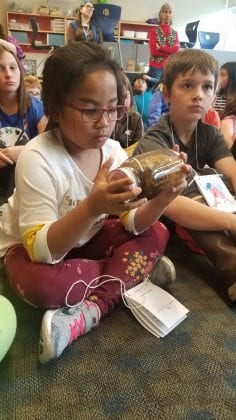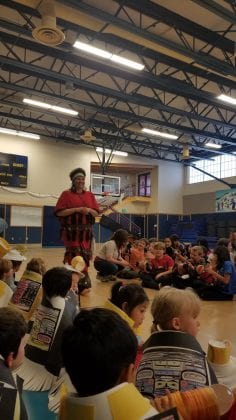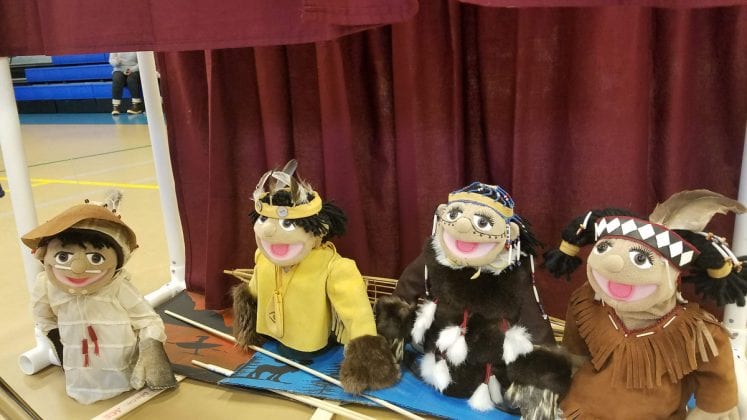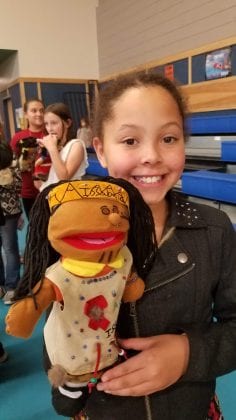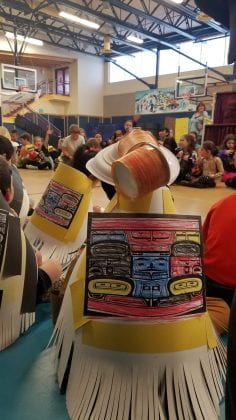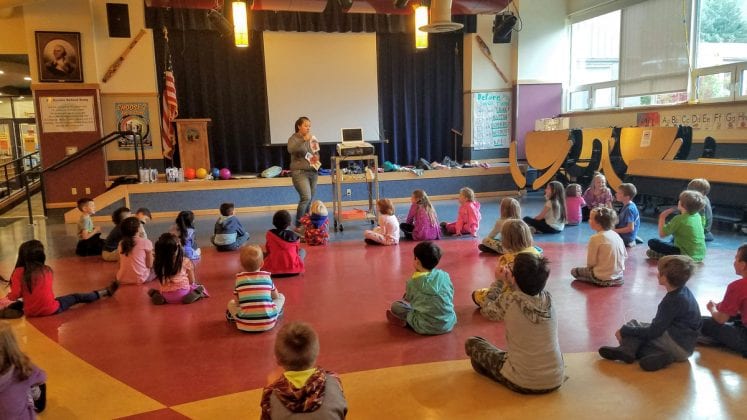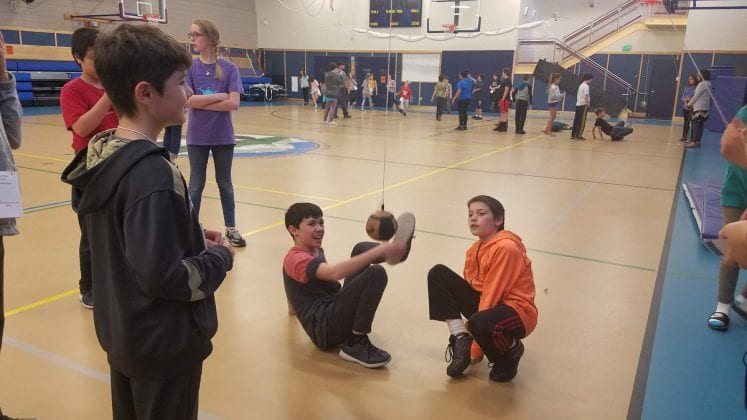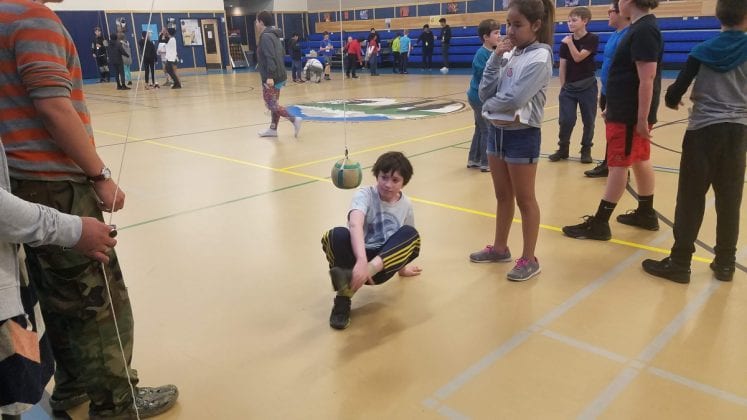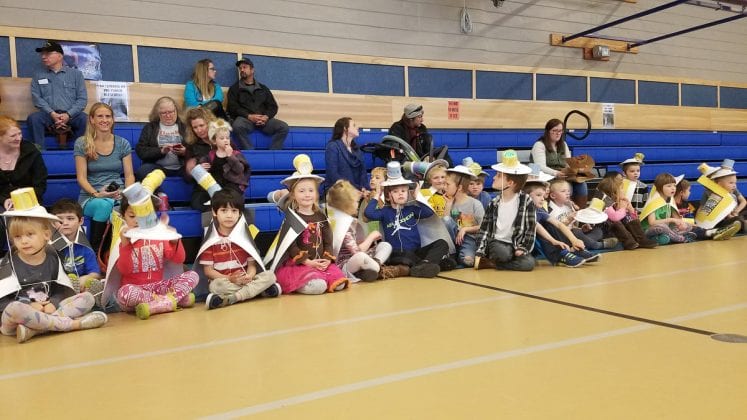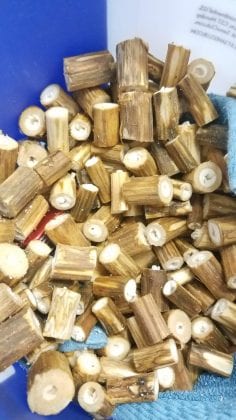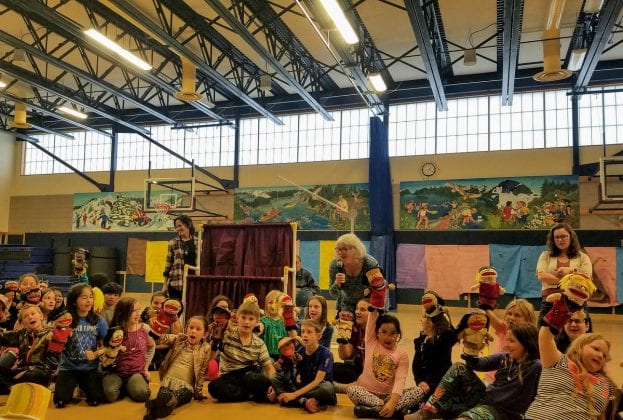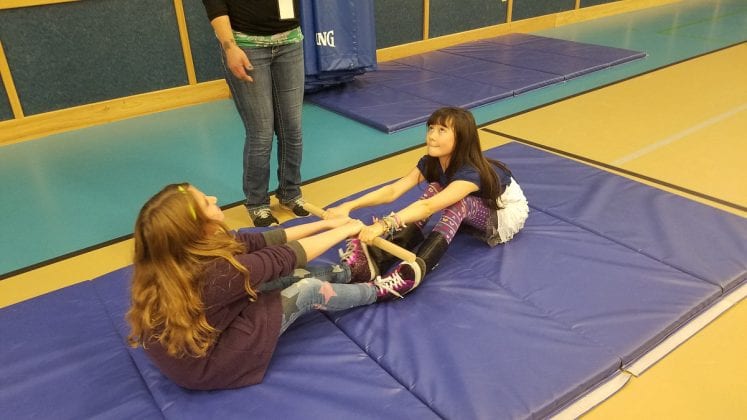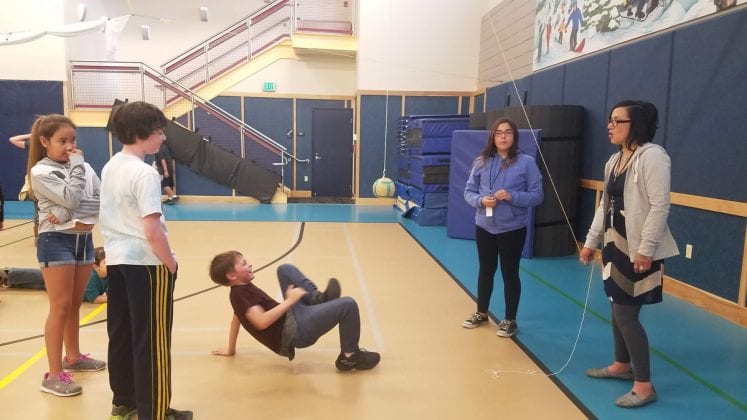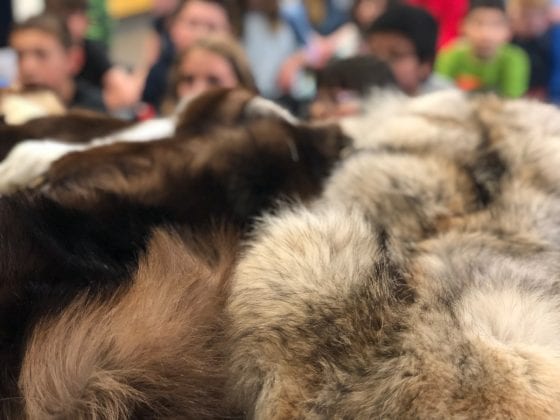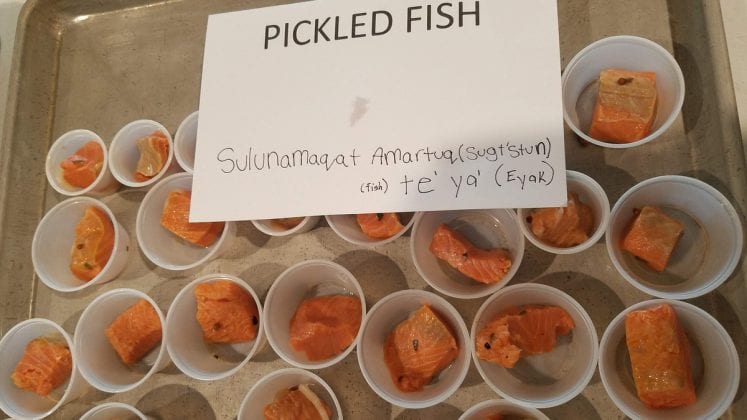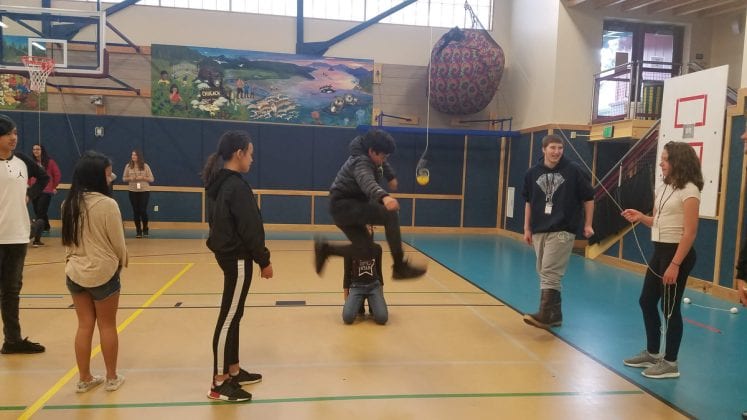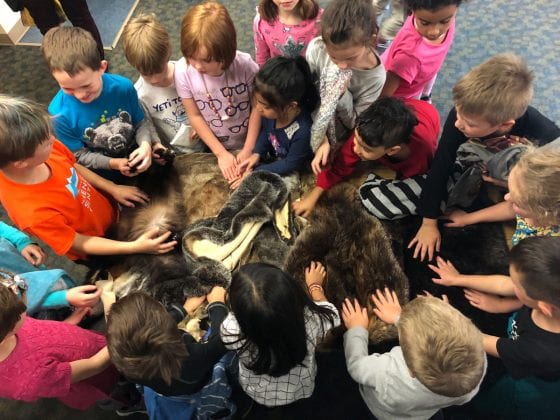On the final day of this year’s Indigenous People’s Culture Week at Mt. Eccles Elementary school, elder Bob Ladd told a story first shared with him by an uncle who grew up in the village of Nuchek on Hinchinbrook Island.
In 1918, the flu epidemic forced the residents of Nuchek and many other neighboring villages to move to Cordova. Ladd said his uncle, born in 1906, loved to tell stories, and this particular story was about how the Chugach Mountains got their name.
“For ages and ages, Prince William Sound, as it was named by Captain James Cook, was covered by a solid sheet of ice,” he began. He went on to describe a group of early Native hunters who were kayaking near the shoreline of the sound. “A man cried out, ‘chuga, chuga’, which in Aleut means ‘hurry, hurry!’” giving the mountains their name. Ladd concluded that “when the ice retreated, so did the animals. The Chugach people followed the ice and the animals deep into the heart of Prince William Sound where they remain to this very day.”
This origin story was a fitting reminder of why Mt. Eccles Elementary School now celebrates Culture Week each year. The land where we live, and where our children grow and learn is rich in tradition and its people have much knowledge to share.
Native Village of Eyak Cultural Director Brooke Johnson oversees Culture Week, with contributions from local instructors, the Eyak Corp. and Chugachmiut.
“This is the first year we’ve had an overarching theme,” Johnson said.
The “Regalia” (ceremonial dress) theme was developed by instructors to introduce traditional skills and art used to create the items worn in dancing and celebration.
The week began with a special event. Tribal member Robert Cunningham harvested a seal and Jim McDaniel demonstrated seal skinning for the students. Angela Arnold, who works for the Eyak Corp., and taught at this year’s culture week, noted that kids took the seal skinning in stride. Traditionally every part of an animal that is harvested is used for food, warmth and dress.
During Culture Week students were divided into four groups: kindergarten, grades 1-2, grades 3-4, and grades 5-6.
“We never teach the same project two years in a row,” Johnson said, so there is no repetition.
This year areas of cultural exploration included traditional ways, language and dance, and Native Youth Olympics. In Native Youth Olympics students got an introduction to traditional NYO events including seal hop, kneel jump, Alaskan high kick and scissor broad jump. Elementary school NYO practice will begin soon and is open to all students. High school NYO will begin later in the year.
Shyla Olsen taught language and dance in the commons each day. Students enthusiastically echoed phrases back to her, and by the end of the week, they were greeting the audience in Sugcestun, the language of the local Sugpiat people.
While students listened to Raven Madison and Angela Arnold share the history and science behind plant-based dyes and creating fabric from local fiber animals like mountain goat, they drew connections and asked questions.
“Can you dye human hair with mushrooms?” wondered one student.
“Can you use spider web?” (to make yarn), asked another.
During traditional ways class, students learned a variety of skills and created pieces of regalia. They covered dying fiber with plant dyes, created beads from devil’s club stalks, and older students sewed furs. Third and fourth graders worked with Mary Babic and Jackie Ladd to create complete outfits for puppets that were presented during Friday’s final celebration. The children showed their puppets, while Barclay Kopchak and Babic used a puppet show to explain each portion of the regalia, along with the traditional materials used to create it. Kindergartners showed off Chilkat robes, seal vests and potlatch hats, all made of paper, and all students demonstrated their newly-learned NYO skills.
The celebration closed with a taste of traditional foods, including moose, pickled fish, and akutaq, a whipped desert of fat and berries, akin to ice cream.
Madison expressed hope that Culture Week will grow to include the rest of the Cordova community. She noted that parents have shared their students’ excitement at bringing home new skills, words and artwork. Johnson said that NVE is working with the school administration to develop a deeper relationship which will include a year-long cultural calendar, so that the exchange between community, elders and youth can continue throughout the school year.
